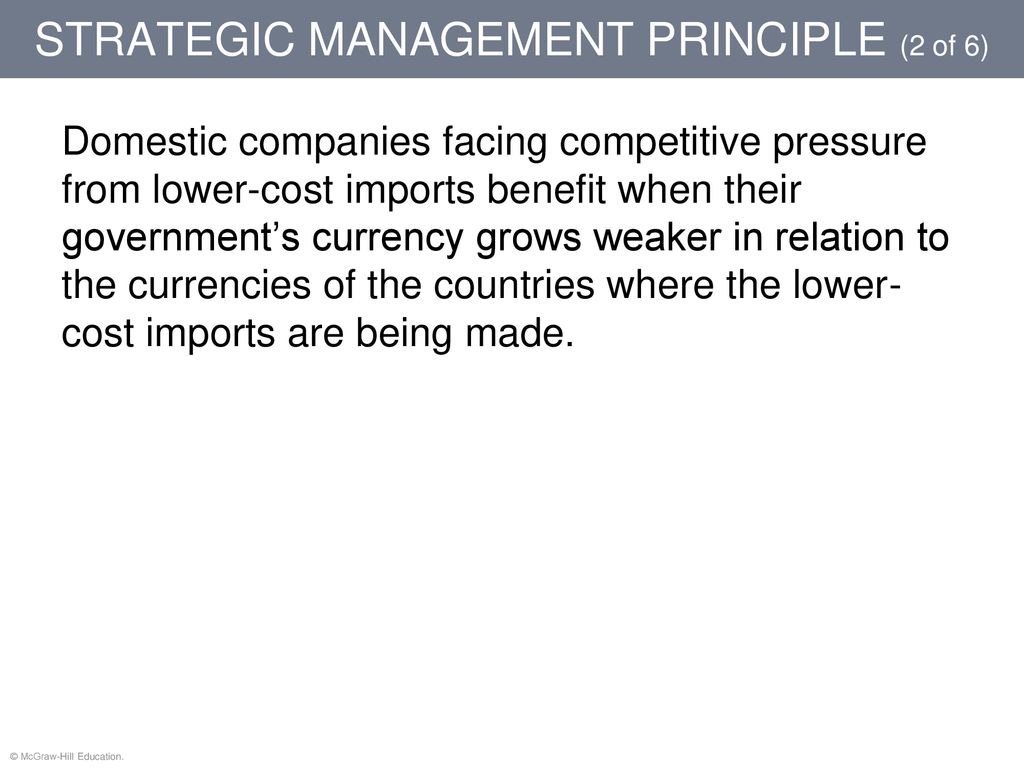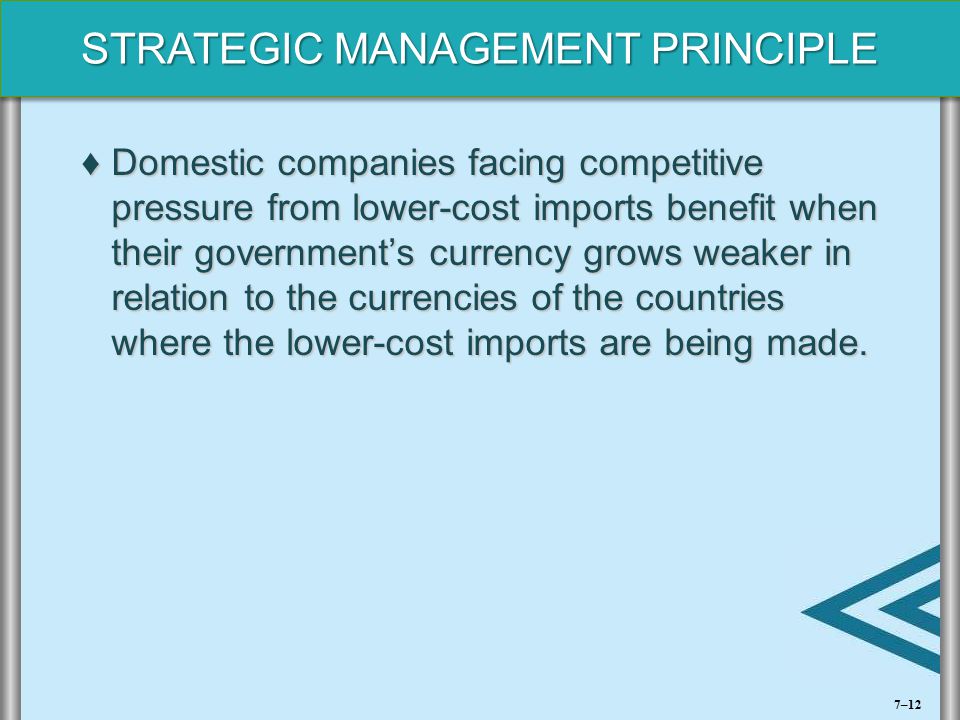Because every company within an industry has. 2 Almost 12 are automobiles and other.
The Bottom Line.
/TariffsAffectPrices1_2-e3858c9eddb649a8b3ffc70af1f9938b.png)
. International trade is the exchange of goods and services among countries. At the same time the Korea-based OEMs competed on low cost intensifying price pressure in the small car segment and the German- and Japan- based OEMs provided a strong challenge in the luxury and performance segments. The big problem occurs when exchange rates are fixed at unreasonably low levels.
Protectionists would have you believe that domestic firms would be helpless against those viciously efficient foreigners so we must have trade barriers to stop that pressure. Always disadvantage domestic companies facing competitive pressure from lower-cost imports when their governments currency grows weaker. Fluctuating foreign exchange rates greatly reduce the risks of competing in foreign markets.
That will be exported to India. As is seen the cost curve of the industry has a rather wide distribution spanning from 20 per barrel to 50 per barrel. The one outlier we notice in the chart is China a low-income-per-capita country that exports a large fraction of high-quality goods.
Accounting for confounding sectoral patenting trends we find that US patent production declines in sectors facing greater import competition. A push for cost. In some cases the market is seeing fluctuations in pricing.
More than 25 of the goods traded are machinery and electronics like computers boilers and scientific instruments. Benefit when their governments currency declines in value relative to the currencies of the countries where the low - cost foreign imports are being manufactured. Domestic companies under pressure from lower-cost imports are benefited when their governments currency grows weaker in relation to the currencies of the countries where the imported.
Domestic companies facing competitive pressure from lower-cost imports benefit when their governments currency grows stronger in relation to the currencies of the countries where the lower-cost imports are being made. Never change the pecking order consisting of which countries represent the low-cost. Figure 2 shows the overall cost curve for global oil industry as estimated by Energy Aspects 2.
Domestic companies facing competitive pressures from low-cost imports. In others a change in product mix and channel. Are competitively disadvantaged when their governments currency declines in value relative to the currencies of.
ООО are largely unaffected by fluctuating exchange rates. Are easy to predict in spite of the variety of factors involved and the uncertainties surrounding when and by how much these factors will change. This is because China exports many high-quality products that have very little domestic value added.
Total trade equals exports plus imports. Additionally just about half of the industrys supply. November 2128 2016.
The continued influx of imported resilient flooring products combined with incremental increases in domestic production is changing the dynamics of this highly competitive market sector. In 2019 the total international trade was just under 19 trillion. What they found is that domestic companies strategies vary based on the perceived quality of the new entrants products.
By 1976 Japanese companies were producing a ton for 35 less than their American competitors. 2008 show that Chinas domestic value added in computers is only 5 value. For example Koopman et al.
Always benefit domestic companies facing competitive pressure from lower-cost imports when their governments currency grows weaker. Benefit when their governments currency declines in value relative to the currencies of the countries where the lower-cost foreign imports are being manufactured. They may hurt the paycheck of workers in industries being pushed out by foreign.
Volume 31 Number 12. Rising import exposure intensifies competitive pressure reducing sales profitability and RD expenditure at US firms. Benefit when their governments currency declines in value relative to the currencies of.
Their 2007 working paper Strategic Responses to Multiple Dimensions of Low-Cost-Country Competition first confirms that more intense foreign competition increases the need for a strategic response. For example consider an electronic component priced at 10 in the US. Cheap imports help the person with a tight budget searching for the best value for their dollar.
If domestic productivity is low or lower than foreign that. A European-based company that makes all of its goods at a plant in Brazil and then exports the Brazilian-made goods to country markets in many different parts of the world. Domestic companies facing competitive pressure from lower cost imports benefit when their govt currency declines in value relative to the currencies of the countries where the lower cost foreign imports are being manufactured.
Conversely a strong domestic currency hampers exports and makes imports cheaper. This adverse effect is larger among initially less. Distribution of industrys cost curve and supply of low-cost sources.
Domestic companies facing competitive pressure from lower-cost imports benefit when their governments currency declines in values relative to the currencies of the countries where the lower-cost foreign imports are being manufactured. The computers that Vist sellsthe product of a low-cost assembly operation using mostly imported componentsare unremarkable. But its actually that competition from viciously efficient competitors which drives up productivity and thus increases living standards.
This three-pronged competitive threat took market share from the Big Three and put pressure on their profitability.

Chapter 7 Strategies For Competing In International Markets Ppt Download

Solved The Effects Of Fluctuating Exchange Rates On Chegg Com

Strategies For Competing In International Markets Ppt Video Online Download
0 Comments